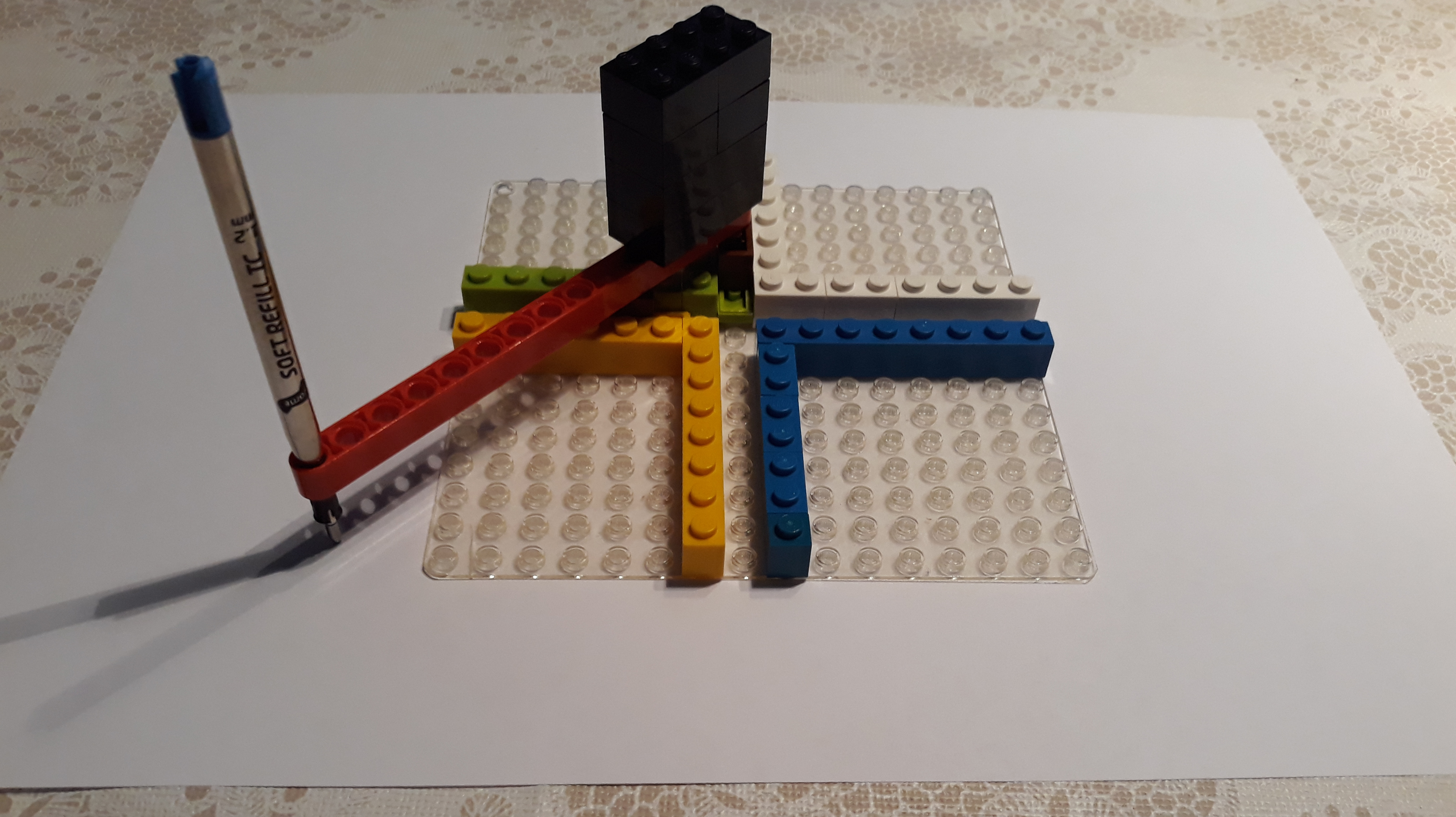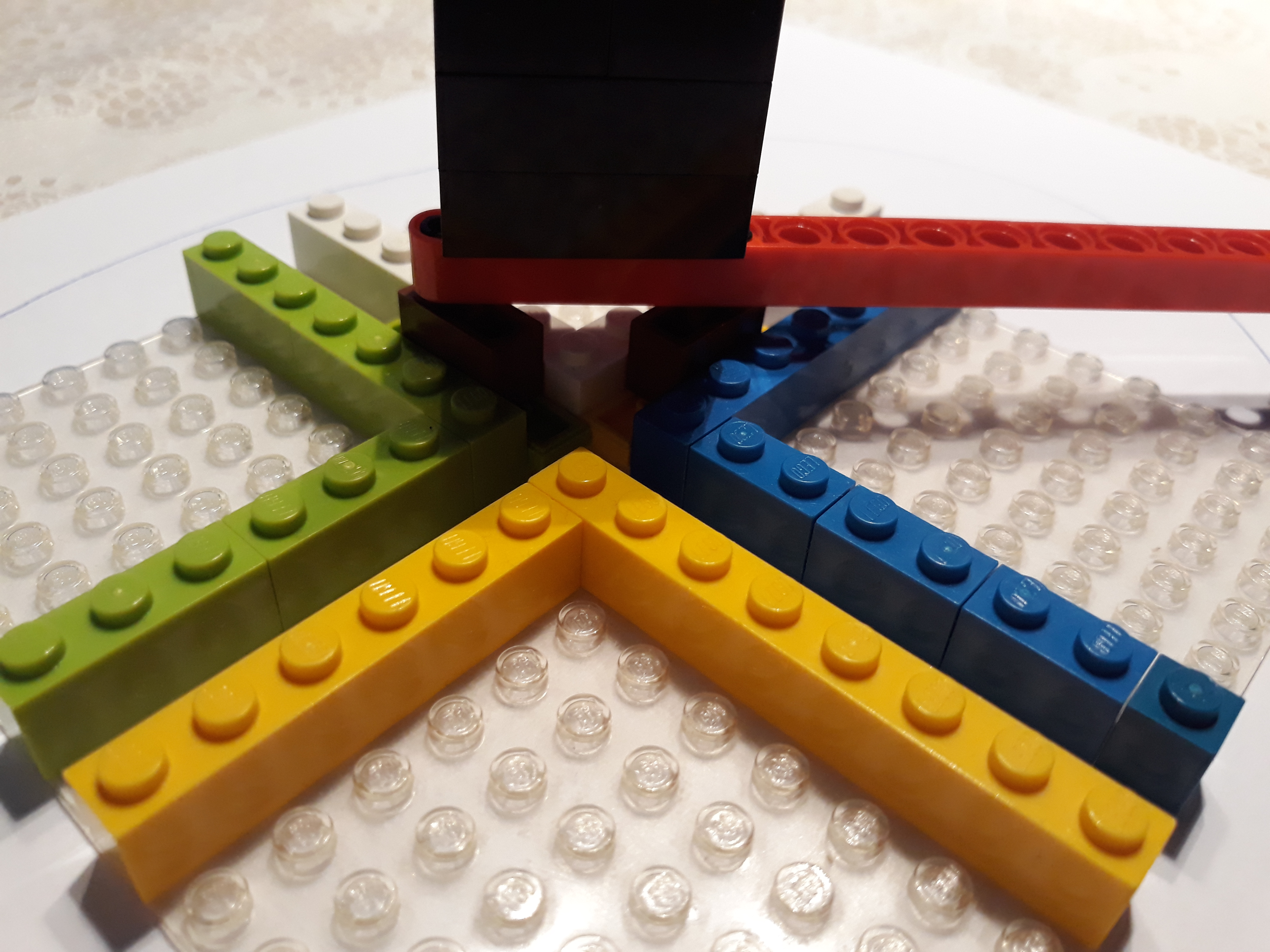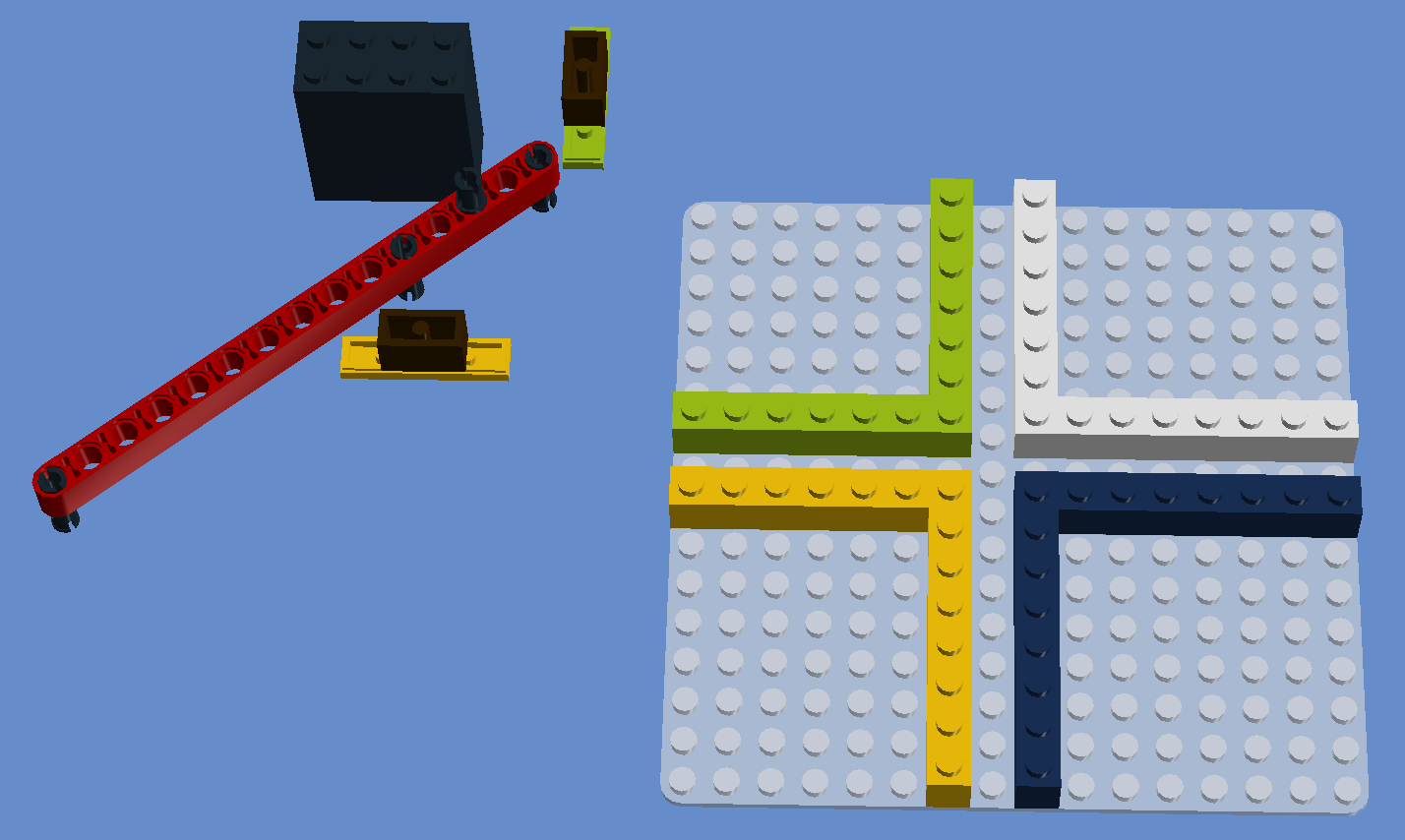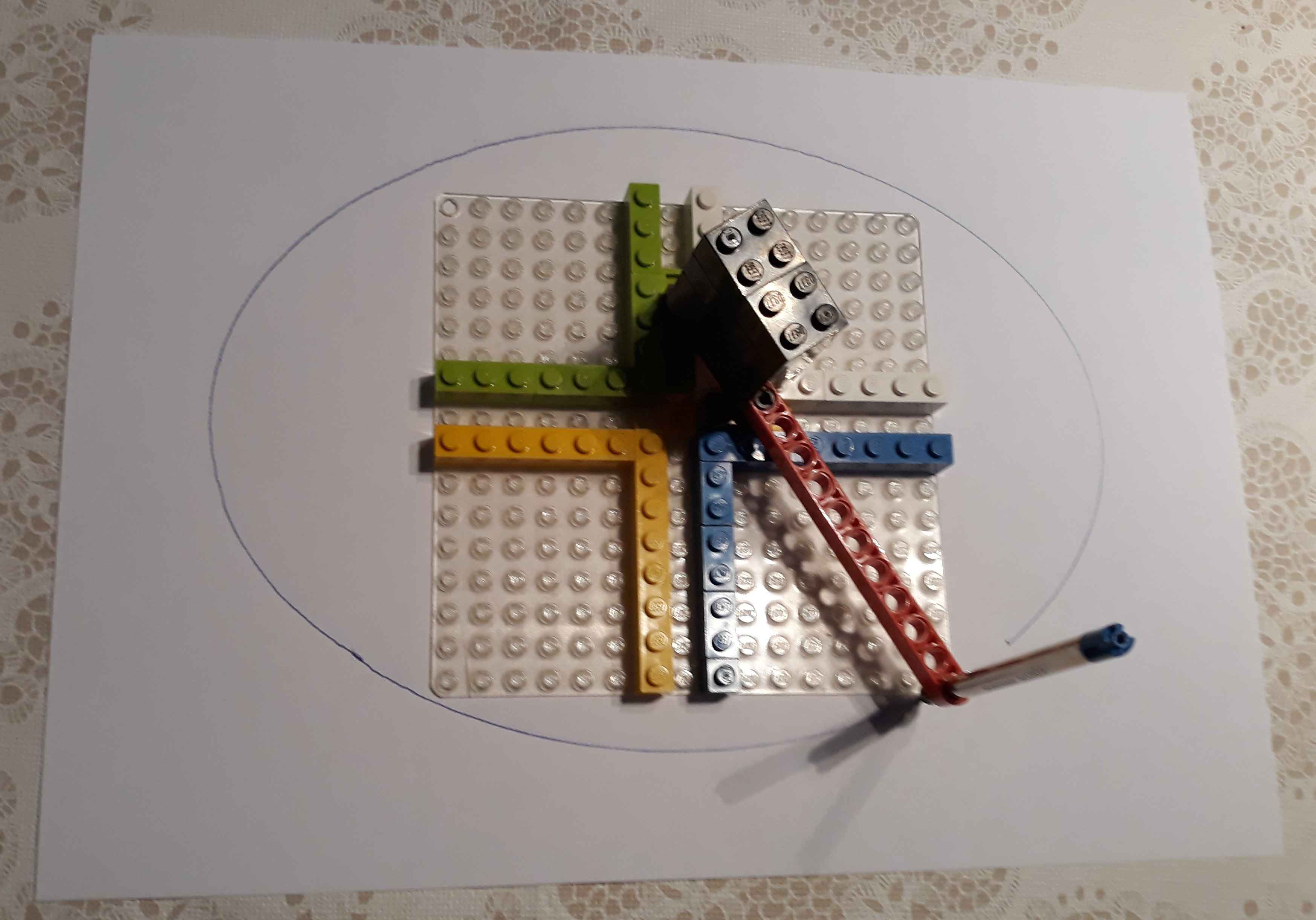18 November 2020
Ellipsograph of Archimedes as a simple LEGO construction
A joint work with Sara Jodlbauer
School curriculum related to elementary geometry usually focuses on "compass and ruler"
constructions where the traditional Euclidean construction steps are allowed to generate a figure.
While it is possible to construct any point of an ellipse that is given by its parameters,
school curriculum seldom covers any methods how to efficiently draw an arc or the full ellipse
by home-made mechanical constructions.
To draw an ellipse on your own, several options exist. One of them, the gardener method is
mentioned
in many textbooks, and it is based on the locus definition, namely:
Given two fixed points \(F_{1}\), \(F_{2}\) called the foci and a distance
\(2a\) which is greater than the distance between the foci, the ellipse is the set of points
\(P\) such that the sum of the distances \(|PF_{1}|\), \(|PF_{2}|\)
is equal to \(2a\):
\[E=\{P\in \mathbb {R} ^{2}:\,|PF_{2}|+|PF_{1}|=2a\}.\]
By using this definition, the gardener puts down two stakes and loops
a piece of rope around them. Using a stick, he pulls the loop taut and marks the points around a curve.
In this article we consider a different method, namely the
ellipsograph (or trammel)
of Archimedes that consists of two shuttles which are confined to perpendicular channels or
rails and a rod which is attached to the shuttles by pivots at fixed positions along the rod.
We remark that such constructions are well-known and very popular as commercial toys.
Also as LEGO constructions there are several options.
A recent
YouTube video contributed by
Brixe63 shows a
complicated mechanism that is definitely based on the same idea, but consists of several
LEGO bricks. Another approach (among several others) can be found on
Rebrickable,
contributed by JKBrickWorks, it uses 47 parts. In our contribution we focus on minimizing the
number of parts, and, at the same time, we focus on
drawing the ellipse,
not just building up the motion.

The figure above shows how the ellipsograph is built. Easy sliding is assured
by using two flat tiles for the shuttles. Their collision-free arrival in the channels
is solved by using \(1\times4\) flat tiles. However, their somewhat long size has some drawback,
namely, that the shuttles require a bigger distance to each other.

We use 24 LEGO parts to build the construction and a
G2 type pen refill.
We highlight that this construction well harmonizes with a set of other LEGO bricks,
described at a
GitHub page;
it allows the students to draw a high variety of other algebraic curves.
On the other hand, static balancing of our contribution is an important part:
a
counterweight is
required to ensure stable motion.

Our contribution can draw almost 100% of a quite big ellipse that fits on an A4 sheet of paper.
A very small part of the arc cannot be drawn because the shuttles get too close in that part
of the movement. As future work we address solving this problem, too.

Finally, we point the reader to LEGO's official computer aided design tool,
LEGO Digital Designer.
We used this program to visualize our concept in a digital way.
The LXF file that contains our work is available
here.
Also the
building instructions can be checked out.

Entries on topic GeoGebra
- I restart my blog… (28 September 2020)
- A new GeoGebra version with better angle bisectors… (29 September 2020)
- Better language support… (6 October 2020)
- Detection of perpendicular lines… (19 October 2020)
- Points attached to an algebraic curve… (31 October 2020)
- Explore envelopes easily! (11 November 2020)
- Offsets of a trifolium (17 November 2020)
- Ellipsograph of Archimedes as a simple LEGO construction (18 November 2020)
- Pete-Dőtsch theorem (29 December 2020)
- Comparison improvements (25 January 2021)
- ApplyMap (26 January 2021)
- Discovering geometric inequalities (27 October 2021)
- Proving inequalities (28 October 2021)
- Supporting logic in function calculus (2 November 2021)
- Supporting logic with technology: Part 2 (12 February 2022)
- Difficulty of geometry statements (30 July 2024)
- GeoGebra Discovery reaches 2000 installations via Snapcraft (30 October 2025)

|
Zoltán Kovács
Linz School of Education
Johannes Kepler University
Altenberger Strasse 69
A-4040 Linz
|







